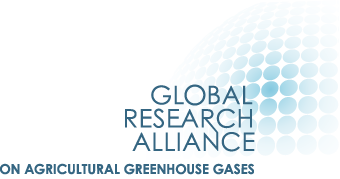Keywords: Expert judgement | surveys| milk yield | animal weight | weight gain
What data needs were addressed? Information on management practices and performance of cattle.
Why was the data needed? When Canada first adopted a Tier 2 approach, various sources of information on cattle production practices and performance were used. Initially, data from surveys published in scientific journals was used, but this was not available for all animal sub-types.
Methods used: Surveys of regional experts.
How was the data need addressed? Surveys posing questions on dairy and beef production practices were administered to about 100 cattle specialists at the regional and/or provincial level in the country, with fewer (e.g. 6) specialists contacted in provinces with smaller cattle populations and more (e.g. 15) contacted in provinces with larger populations. The survey asked the specialists to provide estimates for key parameters (e.g. average weight, mature weight, weight gain and weight loss during lactation, milk yields, conception rates) and to describe key production practices (e.g. time spent in confinement and on pasture in a year, type of feed fed (type of grain and hay/silage fed) and % of grain in the diet).
The data from the surveys were then collated in a table together with existing published data and other data sources (e.g. personal communications from experts on particular topics). Examples selected from the collated results of the survey are given in Table 1. In this way, the survey data were used to fill data gaps in the inventory. For example:
- Milk yield and milk fat data: records of milk yield were available for 8 provinces. For 2 provinces with no recorded data, survey data were used.
- Animal weight and weight loss: Survey data on weight loss were used for 2 provinces where no other data source was available.
- Production practices (e.g. housing, grazing, feed) were estimated based on the predominant practice in each province.
Table 1: Collation of structured survey data and literature values for dairy cows in one Canadian province (values with no given source are from the survey)
| Dairy cows | |
|---|---|
| Average weight (kg) | 700 |
| Mature weight (kg) | 700 |
| Daily weight gain (kg/d) | 0.7 (young stock), 0.3 (cows) |
| Weight loss (kg/d) | -1.28 for first 70 days of lactation |
| Milk (kg/d) | 33.0 31.9 (recorded data) |
| Milk fat (%) | 3.5 3.6 (recorded data) |
| Conception rate (%) | 55 (first service) 67 (Usenik, pers. comm.. with first service based on only 30% of population) |
| Days in milk (d) | 351 (survey estimate) 351 (recorded) |
| Days dry (d) | 75 (survey estimate) 75 (recorded) |
| Production environment | 95% confinement housing, dry cows in dry pens for 7-8 weeks, and 1 week in calving pen |
| Feed | TMR (60% forage, 40% concentrate) for 351 days |
The survey results were compiled in an internal report, a summary of which was published in Ominksi et al (2007), and results were incorporated into Canada’s national inventory (2005).
Further Resources
Bondi D, et al. 2004. Improving Estimates of Methane Emissions Associated with Enteric Fermentation of Cattle in Canada by Adopting an IPCC (Intergovernmental Panel on Climate Change) Tier-2 Methodology. Unpublished report.
Ominski KH, et al. 2007. Estimates of enteric methane emissions from cattle in Canada using the IPCC Tier-2 methodology. Canadian journal of animal science.
Author: Andreas Wilkes, Values for development Ltd (2019)

